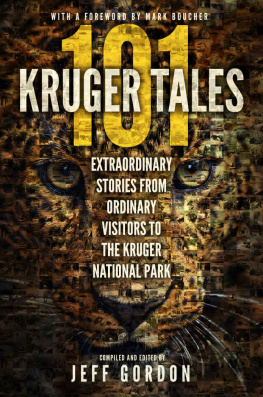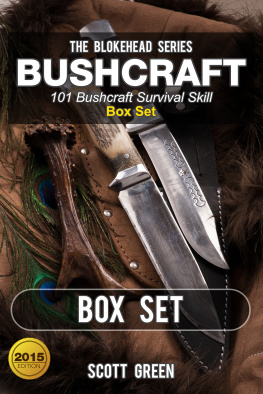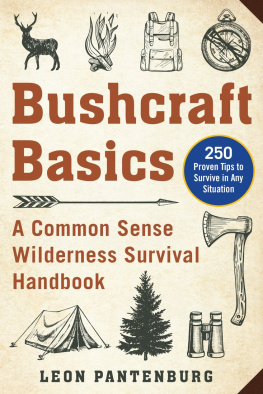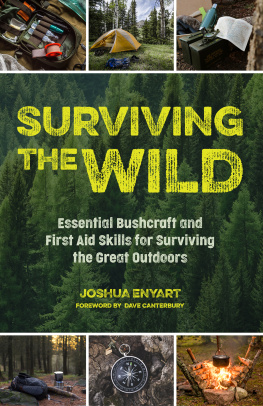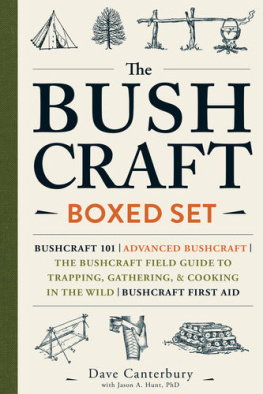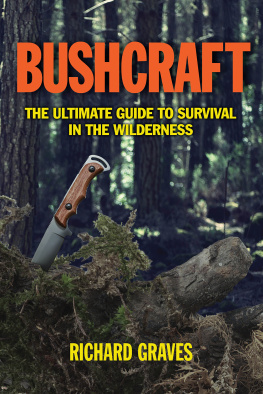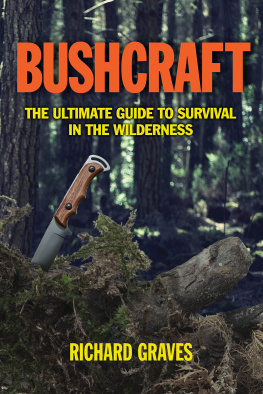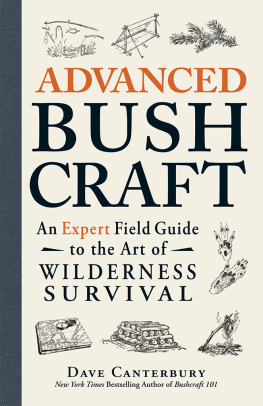Gordon - Wilderness Survival Skills - Fire Building Techniques: For Camping, Bushcraft, and Preppers
Here you can read online Gordon - Wilderness Survival Skills - Fire Building Techniques: For Camping, Bushcraft, and Preppers full text of the book (entire story) in english for free. Download pdf and epub, get meaning, cover and reviews about this ebook. year: 2019, genre: Home and family. Description of the work, (preface) as well as reviews are available. Best literature library LitArk.com created for fans of good reading and offers a wide selection of genres:
Romance novel
Science fiction
Adventure
Detective
Science
History
Home and family
Prose
Art
Politics
Computer
Non-fiction
Religion
Business
Children
Humor
Choose a favorite category and find really read worthwhile books. Enjoy immersion in the world of imagination, feel the emotions of the characters or learn something new for yourself, make an fascinating discovery.

- Book:Wilderness Survival Skills - Fire Building Techniques: For Camping, Bushcraft, and Preppers
- Author:
- Genre:
- Year:2019
- Rating:5 / 5
- Favourites:Add to favourites
- Your mark:
- 100
- 1
- 2
- 3
- 4
- 5
Wilderness Survival Skills - Fire Building Techniques: For Camping, Bushcraft, and Preppers: summary, description and annotation
We offer to read an annotation, description, summary or preface (depends on what the author of the book "Wilderness Survival Skills - Fire Building Techniques: For Camping, Bushcraft, and Preppers" wrote himself). If you haven't found the necessary information about the book — write in the comments, we will try to find it.
Gordon: author's other books
Who wrote Wilderness Survival Skills - Fire Building Techniques: For Camping, Bushcraft, and Preppers? Find out the surname, the name of the author of the book and a list of all author's works by series.
Wilderness Survival Skills - Fire Building Techniques: For Camping, Bushcraft, and Preppers — read online for free the complete book (whole text) full work
Below is the text of the book, divided by pages. System saving the place of the last page read, allows you to conveniently read the book "Wilderness Survival Skills - Fire Building Techniques: For Camping, Bushcraft, and Preppers" online for free, without having to search again every time where you left off. Put a bookmark, and you can go to the page where you finished reading at any time.
Font size:
Interval:
Bookmark:
Wilderness Survival Skills
Bushcraft and Prepper Fire Building Techniques to keep you Warm and Fed in an Emergency, Camping, or at Home
Ben Gordon
Copyright 2019 by Ben Gordon - All rights reserved.
This document is geared towards providing exact and reliable information in regard to the topic and issue covered. The publication is sold with the idea that the publisher is not required to render accounting, officially permitted, or otherwise, qualified services. If advice is necessary, legal or professional, a practiced individual in the profession should be ordered.
- From a Declaration of Principles which was accepted and approved equally by a Committee of the American Bar Association and a Committee of Publishers and Associations.
In no way is it legal to reproduce, duplicate, or transmit any part of this document in either electronic means or in printed format. Recording of this publication is strictly prohibited and any storage of this document is not allowed unless with written permission from the publisher. All rights reserved.
The information provided herein is stated to be truthful and consistent, in that any liability, in terms of inattention or otherwise, by any usage or abuse of any policies, processes, or directions contained within is the solitary and utter responsibility of the recipient reader. Under no circumstances will any legal responsibility or blame be held against the publisher for any reparation, damages, or monetary loss due to the information herein, either directly or indirectly.
Respective authors own all copyrights not held by the publisher.
The information herein is offered for informational purposes solely and is universal as so. The presentation of the information is without contract or any type of guarantee assurance.
The trademarks that are used are without any consent, and the publication of the trademark is without permission or backing by the trademark owner. All trademarks and brands within this book are for clarifying purposes only and are the owned by the owners themselves, not affiliated with this document.
Introduction
I want to thank you for downloading the book, Wilderness Survival Skills: Bushcraft and Prepper Fire Building Techniques to keep you Warm and Fed in an Emergency, Camping, or at Home.
This book contains proven strategies on how to start a fire from the materials around you, even in forests that are soaked from weeks of rain.
Youll learn about the three things any fire needs, and how to provide them as efficiently as possible.
Then youll delve into what makes a good fuel, and how to find it in the forest, as well as a few fire lays and how to pick which one will work the best for the fuel and wind.
Finally, well cover starting the fire, first with modern methods, and later by banging rocks and rubbing sticks.
Each fire lay, type of tinder, and fire-starting method is explained, in detail, with pointers on how to be the most efficient with your actions, and tips on how to ensure success.
Thanks again for downloading this book, I hope you enjoy it!
The Fire Stool
Fire requires three things to burn, this is often referred to as the fire triangle, but makes more sense in my mechanical brain as a three-legged fire stool. Pull any of the three legs, and the results will be less than incendiary. The first leg, which is most often overlooked, is oxygen. Fire is the chemical reaction of oxygen with fuel, using up the oxygen in the process. Providing oxygen is easy enough, as it makes up about 21% of the atmosphere, but the fire will quickly burn through the supply if not allowed a constant inflow of fresh air. When laying out a fire, it is important to plan how oxygen will get to what must be burned in the initial stages of the fire. A densely packed pile of perfectly dry twigs will not burn well, whereas spreading them a bit and stacking them so as to allow air flow will have much better results.
The next leg is fuel, or something to burn. This can be paper, wood, plastic, or even metals if the fire gets hot enough. The most important qualities of the fuel are dryness and size. Wood, leaves, and litter that are soaked with water are very difficult to light, as a tremendous amount of energy that could ordinarily be used to ignite the fuel must be wasted boiling the water and forcing out the steam before the fuel can take light. Smaller pieces of fuel can be lit more easily, so starting with things that are light and fluffy, like dry pine needles and leaves, can give a larger flame to light twigs, branches, and finally logs. Dry is emphasized because barring extremely arid climates, leaf litter on the forest floor is nearly always wet, or at least damp enough to make it steam instead of catch fire.
The final leg is heat energy, usually from an existing flame or spark. Wood or other fuels are a lot like a battery with a bouncer. For years, sunlight hits trees, and most of the energy is used to maintain the life of the tree, while a little is stored away in the form of wood growth. Once the tree is cut down, that heat and light is still accessible, but theres an access fee. The cover charge for this show is that some amount of energy must be provided to the fuel upfront to get the party going. Once this energy has been invested, enough that the fuel continues to burn without external input, the excess heat can be used to dry and light other pieces of fuel. Larger pieces need more energy upfront, while smaller pieces like twigs and grasses hardly need any coaxing to start up. Start with very small pieces of fuel and a match or lighter for an easy start and transition up the fire food-chain to twigs, small sticks, and progressively larger pieces up to logs and larger as necessary.
Finding Fuel
As fire is a reaction of oxygen to release energy in the form of heat and light, the list of potential fuels is almost endless. However, just because something can be burned does not mean it is wise to do so. Plastics (among other things) often emit noxious fumes when burned. The best fuel for a campfire consists of dry, seasoned wood, with perhaps some twigs and paper to get it started. Wood was described by Aldo Leopold as a sort of natural battery: the tree stores away little bits of the energy it takes in from the sun over its lifetime, and burning it releases the heat and light again. It turns out that, given an excess of nutrients and water, trees of most species store away about the same weight of wood each year. This explains why the wood of fast-growing trees like poplar or birch tends to be much lighter, or less dense, than wood of a slower grower, like a red oak.
Recently alive wood, or green wood , has a very high moisture content. Combustion of a piece of wood requires that the majority of the water stored within that piece first be boiled off before it will sustain a flame on its own, so reducing the moisture content before trying to light firewood is essential. This is not to say that its not possible to burn green wood, just that its much more difficult to do so. Denser woods take longer to dry out than lighter woods, as there is less air space for the water to migrate out through the pores of the wood. The moisture can either be allowed to migrate out on its own, or the wood can be dried in a large kiln. Either way, exposing more surface area to the air will help the wood to come to equilibrium with the moisture content of the surrounding air. Splitting firewood is the normal means of increasing surface area, and stacking it well to allow air to circulate through the stack speeds drying. Even split and stacked, air-drying dense oaks can take more than a year in northern climates. Not every fire can be planned years in advance, which brings about the importance of finding wood already dry enough to burn.
The forest floor is wet. Even when it seems dry, the dense mat of litter that accumulates in most forests is a teeming mass of decay, churned by earthworms, and it holds moisture very well. Anything in contact with it will be much wetter than a few feet off the ground. Looking up is the best way to find dry wood when it is needed for a fire in the near-term. Often branches break off of trees and fall, only to get hung up on lower branches and never make it to the ground. Another option is dead branches still attached to the tree. Dense stands of pines and other trees will block out much of the light from the forest floor, rendering the lower branches worthless. In white pines and spruces especially, the lower branches die off, but continue to hang on the tree, dry and ready to serve as kindling. When larger fuel is needed, look for whole dead trees still standing with bark intact. Even if the upper portions are rotted, the lower are probably still solid enough to be used as some of the major logs for a fire, at least for long enough to dry out some greener logs.
Next pageFont size:
Interval:
Bookmark:
Similar books «Wilderness Survival Skills - Fire Building Techniques: For Camping, Bushcraft, and Preppers»
Look at similar books to Wilderness Survival Skills - Fire Building Techniques: For Camping, Bushcraft, and Preppers. We have selected literature similar in name and meaning in the hope of providing readers with more options to find new, interesting, not yet read works.
Discussion, reviews of the book Wilderness Survival Skills - Fire Building Techniques: For Camping, Bushcraft, and Preppers and just readers' own opinions. Leave your comments, write what you think about the work, its meaning or the main characters. Specify what exactly you liked and what you didn't like, and why you think so.






